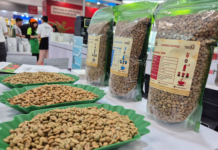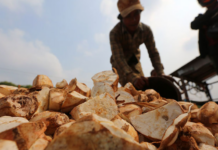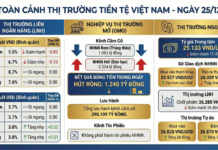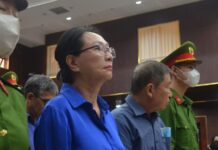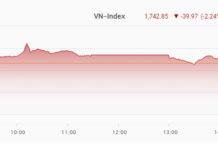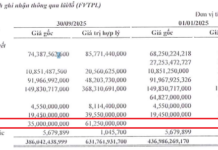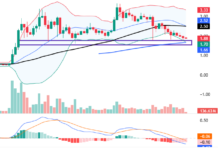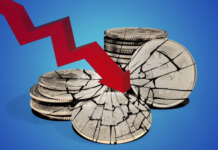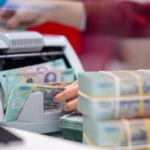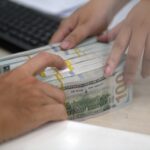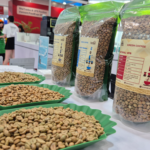At the Vietnam Economic Scenario Forum 2025: “Reform – Shaping the Era of Growth and Prosperity: Breakthrough Solutions to Achieve High Growth and Sustainable Development in the New Era,” held on January 7, 2025, by the Vietnam Economic Science Association, together with the Vietnam Association of Small and Medium Enterprises (VINASME) and Vietnam Economic Magazine/VnEconomy, PGS.TS. Nguyen Hong Son, Deputy Head of the Central Economic Committee, assessed that 2024 was a challenging year for the Vietnamese economy.
IDENTIFYING THE DRIVING FORCES BEHIND 2024’S PERFORMANCE
The complexity of the global situation was not only due to ongoing security and political tensions, such as escalating conflicts in Ukraine and the Middle East, but also to economic factors. Some global supply chains were disrupted, causing significant fluctuations in the prices of essential goods, particularly in the logistics sector, which led to prolonged increases in freight rates. Important shipping routes like the Panama Canal, the Suez Canal, and the Red Sea experienced congestion, and a strike at 36 ports along the East Coast and Gulf of Mexico in the US disrupted the supply chain for various goods worldwide.
Container shipping rates from Asia to the US and Europe doubled or tripled at times compared to the previous year, putting pressure on exporting businesses. Additionally, global trade and investment declined, economic recovery was slow and fragile, and exchange rates and interest rates fluctuated complexly.
Despite these challenges, the Deputy Head of the Central Economic Committee emphasized that in 2024, for the first time in many years (since 2016), Vietnam achieved and exceeded all 15 economic and social development targets with significant, comprehensive, and outstanding results. For instance, GDP growth exceeded 7%, continuing to be a bright spot in the region and the world; the economy’s scale reached approximately $470 billion; growth quality improved, and labor productivity growth was estimated at 5.7%, surpassing the set target.
Macroeconomic stability was maintained, inflation was controlled, and the economy’s major balances were ensured. Total state budget revenue exceeded 19% of the estimate, contributing to the investment in development; FDI attraction reached approximately $40 billion, placing Vietnam among the top 15 developing countries in the world in terms of FDI attraction…

“These are very important results that we need to build on for 2025,” said the Deputy Head of the Central Economic Committee. However, he suggested that the delegates focus on analyzing, evaluating, and clarifying specific aspects.
Firstly, what were the driving forces behind the outstanding results of 2024, given that challenges and difficulties were perceived to outweigh opportunities and advantages? What caused the state budget revenue to increase significantly and exceed the estimate?
Secondly, what are the main bottlenecks hindering the development of the Vietnamese economy? What are the causes of these bottlenecks? In addition to common issues and matters of principle, it is necessary to delve into specific areas, problems, and content that needs to be addressed.
Thirdly, what are the key lessons learned from 2024 that can be applied to continue successful practices and learn from less successful experiences? For example, the successful completion of the 500kV transmission line project from Quang Trach (Quang Binh) to Pho Noi (Hung Yen) in just over six months, or the achievement of 693 km of new expressways in the year, bringing the country’s total expressway length to over 2,021 km.
“These successes not only demonstrate the determination of the Central Government but also inspire unity among local governments, businesses, and the people. They also highlight the importance of bold, confident, and decisive thinking; setting high goals; and persevering to achieve the set targets,” emphasized PGS.TS. Nguyen Hong Son.
THE NEED FOR BREAKTHROUGH SOLUTIONS IN 2025
According to the leader of the Central Economic Committee, 2025 is a year of particular significance and importance in the country’s renewal and development process. It is the final year of implementing and achieving the goals set by the 13th Party Congress; it is also the year of party congresses at all levels leading up to the 14th National Party Congress, marking the beginning of a new era of national advancement. Additionally, 2025 is envisioned as a year of acceleration and breakthrough, laying a solid foundation for the economy to enter a phase of high growth and sustainability in the next 5-10 years. The government aims for a minimum growth rate of 8% and strives for double-digit growth.

It is forecasted that the global context in 2025 will continue to undergo profound changes and transformations. Some long-term structural challenges to the global economy will also become more complex.
Given this context and the high demands, the leader of the Central Economic Committee suggested that 2025 be given a special focus. The approach to developing Vietnam’s economic scenario for 2025 should not only aim for high growth in that year but also establish a solid foundation for high and sustainable growth in the next 5-10 years.
With this in mind, the leader of the Central Economic Committee proposed the following key solutions:
Firstly, the primary and overarching requirement is to continue ensuring macroeconomic stability as the foundation for the economy’s rapid and sustainable growth. What policy solutions should be implemented to strengthen this foundation in 2025 to enhance the economy’s resilience, especially given Vietnam’s high degree of openness and reliance on international trade and investment?
Secondly, what specific and breakthrough solutions are needed to rejuvenate traditional growth drivers such as investment, exports, and consumption? How can we boost investment from the private sector, which employs about 85% of the workforce and contributes approximately 46% of GDP and 30% of state budget revenue…? How can we connect private investment with public investment and FDI to create synergy and promote growth? In addition to continuing to promote and improve the efficiency of public investment, how can we boost exports while controlling imports and increasing the value of exported goods, thereby contributing more to GDP? How can we increase purchasing power and stimulate the domestic market and consumption to drive production and create momentum for growth?
From the perspective of aggregate supply, what specific solutions are needed to promote the development of economic sectors, especially high-tech industries, and growth poles, particularly in localities such as Hanoi and Ho Chi Minh City, or dynamic regions like the Red River Delta and the Southeast region?
Thirdly, what specific solutions are needed to quickly and thoroughly address existing bottlenecks, especially those related to institutions, infrastructure, and human resources? Among these, institutional bottlenecks are considered the most critical, aiming to innovate and enhance the efficiency of managing and utilizing traditional resources such as human resources, material resources, land, natural resources, and financial resources.
“This is crucial because, with a GDP per capita of around $4,000, we are in a development phase that relies mainly on the efficient use of resources,” emphasized PGS.TS. Nguyen Hong Son.
Fourthly, what specific and breakthrough solutions are needed, especially in terms of institutions and policies, to foster development and maximize new growth drivers, such as science, technology, and innovation, digital transformation, cultural, historical, and traditional values, and the branding of the country, Vietnamese businesses, and products…?
Fifthly, what specific solutions are required to ensure sustainable social and environmental development in the context of high growth? Achieving high growth is already challenging, but ensuring sustainable development alongside it is even more complex. This is indeed a difficult and intricate issue, but it also sets Vietnam apart and reflects its unique development path.
The 2024 Total Budget Revenue Surpasses the Estimate by 17.4%
The year 2024 witnessed the relentless endeavors of the Ministry of Finance in executing the nation’s financial-budgetary tasks. With agile and assertive fiscal policies, budgetary revenue and expenditure achieved remarkable outcomes, significantly contributing to macroeconomic stability, inflation control, and social welfare assurance.
“Unleashing Economic Growth: A 12.5% Surge in Credit Across the Nation as of December 13th.”
The information was released by the State Bank of Vietnam (SBV) at a conference on December 14, 2024, reviewing the monetary policy control and banking activities in 2024 and outlining tasks for 2025.
Unlocking Economic Growth: Unleashing Production and Business Through Policy Reform
Prime Minister Pham Minh Chinh concluded the regular Government meeting on the morning of December 7, emphasizing that policy formulation must be forward-thinking, ambitious, and bold. He stressed that policies should “unshackle” production and business activities to unleash their full potential, with the primary focus on boosting economic growth. This, in turn, will increase per capita income, raise labor productivity, improve the material and spiritual lives of the people, and enhance the country’s stature.


